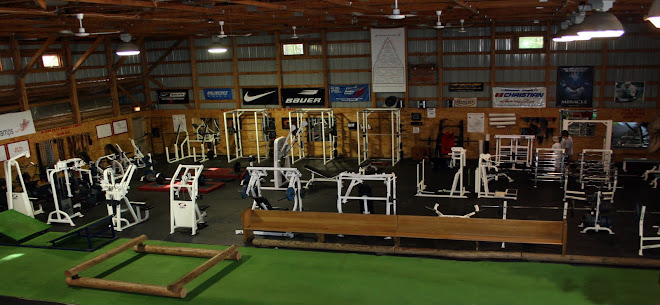I have never been a big fan of the hockey treadmill for numerous reasons. A few years back, I managed a gym in Philadelphia, PA, were we had a total of 6 hockey treadmills and 6 running treadmills. So I have worked with them pretty extensively.
I was recently at a tournament in Duluth, MN and was talking with a couple of parents on how great they thought the treadmill was. They asked why MHC didn’t have a treadmill and what my thoughts on them were. We discussed them for awhile. Not sure if I convinced them or not, but we had a good talk.
When I returned back to the office the next morning, I received my monthly email from Sports Physiologist Dr. Mike Bracko. Dr. Bracko runs the Institute for Hockey Research in Calgary, Alberta, Canada ( http://www.hockeyinstitute.org/ ) He spends his time studying the game of hockey and how to improve players on and off of the ice. Dr. Bracko is cutting edge. This month’s newsletters was “Do Hockey Treadmills Work”
So I thought I would expand on my conversation that I had in Duluth, so all could be a part of it. Adding in Dr. Bracko’s research backs me up, as I am just a strength coach!
My First thought has always been; with so many indoor rinks open all year around, why try to reproduce ice itself? Skating on the treadmill only focuses on forward skating. There are at least 20 other characteristics of skating beside forward skating. Then add in stickhandling and shooting, (something you can practice on the ice, but not on the treadmill) and you are up to at least 22 other characteristics of the game of hockey you are ignoring. So why not spend time on the ice, or in Minnesota, on a frozen lake?
My second thought has always been; a solid off-ice conditioning program is really second to none. You become a better skater off of the ice. By running, jumping, lifting and skating together on a regular basis. There is a 96% direct correlation to off-ice performance and on-ice performance. If you improve on your vertical jump and 40 yard dash time in the gym, you improve on your skating speed on the ice. The stronger, more explosive, faster and quicker you become off of the ice, the better skater you become. Most gym memberships are very cheap. Some youth associations have access to their own personal strength coach for no cost to their players. So why spend extra money on a hockey treadmill that isn’t the best thing for a player?
My third thought has always been on skating form on the hockey treadmill. Not that perfect skaters are always the best skaters, but why try to ruin your stride? Dr. Bracko says skating on a treadmill with a two (2) degree (or more) incline does not simulate on-ice skating conditions-as every hockey rink in the world is flat and has no incline. Dr. Bracko found that skating uphill on a treadmill, a hockey player has to alter his or her stride to push-off with more hip extension and less hip abduction. In other words, a player has to push backward more than to the side. This actually contradicts one of the most important characteristics of fast skaters…a wide powerful stride!
In another study, Dr. Bracko found that players were “habituated” to skating on a flat treadmill that progressively went faster when they had the following characteristics: decreased stride rate, increased stride length and skated more upright toward the end of the study. It is commonly known that fast hockey players have a higher stride rate. In fact, this is one of the most important characteristics of fast skating. Therefore, if a player on a treadmill decreases his or her stride rate, it actually means he/she is skating SLOWER!! Stride length could mean stride width, but generally speaking, we want players to have a wide stride, not a long stride. And if players were more upright while skating fast on a treadmill, this means they had the incorrect biomechanics because if you watch elite players skate fast, they are leaning forward a lot and have a lot of trunk flexion.
My fourth thought has always been, could it be possible to use skating treadmills for a conditioning tool? I believe the answer to this is yes, but I don’t believe it to be the best conditioning tool.
Do your research before signing up for anything. There are a lot of tools out there that are good, however there are also a lot of gimmicks. In today’s world, funds are tight so spend them wisely.
Copyright by Joe Ciardelli, Minnesota Hockey Camps, 24621 So Clark Lake Rd, P.O. Box 90, Nisswa, MN 56468-0090 Phone 218.963.2444 Fax 218.963.2325 Email: joe@mnhockeycamps.com All rights are reserved. No part of this book, blog OR template may be reproduced or transmitted in any form by any means without permission in writing from Minnesota Hockey Camps
Thursday, January 20, 2011
Subscribe to:
Post Comments (Atom)



No comments:
Post a Comment